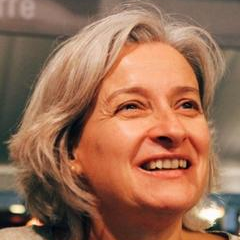Housing and Environment Control Systems in Poultry Production
A special issue of Animals (ISSN 2076-2615). This special issue belongs to the section "Animal System and Management".
Deadline for manuscript submissions: closed (15 January 2023) | Viewed by 33378
Special Issue Editors
Interests: agricultural building and environment control systems on animal production; animal welfare; animal and poultry production systems
Special Issues, Collections and Topics in MDPI journals
Interests: rural facilities; ambience; sensors
Special Issues, Collections and Topics in MDPI journals
Interests: engineering for agricultural, animal and poultry production systems; instrumentation; precision livestock farming; post-harvest loss
Interests: environment control for animals; gas emissions in animal facilities; computational modelling in animal facilities
Special Issues, Collections and Topics in MDPI journals
Interests: precision livestock farming (PLF); modelling and management of animal responses; animal health and welfare
Special Issues, Collections and Topics in MDPI journals
Interests: energy efficiency; greenhouses; animal buildings; environmental control; circular economy
Special Issues, Collections and Topics in MDPI journals
Interests: environmental control for livestock and poultry; precision livestock farming; animal waste management; circular economy
Special Issues, Collections and Topics in MDPI journals
Special Issue Information
Dear Colleagues,
Characterized by having one of the largest and most advanced technological collections in the agricultural sector, having a fast production cycle and relatively low production cost, among the sectors of animal food production the poultry industry is considered to be the most important in service to the food security of the growing global population. One of the poultry industry’s most pressing challenges is to always focus on the relentless pursuit of ever more efficient production transformation. In this context, aviaries must be designed and innovated in order to guarantee environmental sustainability, animal thermal comfort, the quality of the air and acoustic environment, animal productivity, and the well-being of birds. Additionally, aviaries must be compatible with different climatic and social characteristics, as well as the economy and market of each specific region of the world in which they are inserted.
To achieve these goals, it is essential to pay attention to the phases of architectural design of the poultry houses, in the choice of techniques and materials used in the built environments, and in the introduction and dimensioning of air-conditioning systems aiming at thermal, aerial and acoustic comfort. Additionally, projects that prioritize the correct handling, treatment, and use of waste generated by the activity must be executed, aiming at environmental preservation and the guarantee of survival of future generations, minimizing the energy, productive, and economic expenses, essential to the sustainability of the activity on the planet. The development of reliable mathematical systems and processes to assess breeding conditions, the welfare of farm animals, and good service conditions for the workers involved in the process should be highlighted. Finally, the issues of the health and nutritional quality of the product generated, food security, and compliance with the regulatory laws of the countries involved must be considered.
The main topics of this Special Issue are included in the following list, which does not aim at limiting the research horizon of the papers:
- Poultry housing solutions for different climatic zones of the world.
- Building design for resources and energy saving.
- Different building typologies and environmental control systems as they influence environmental quality/thermal comfort and its effects on the behavior, welfare, health, hormonal, physiological, and productive poultry performance.
- Natural and mechanical environment control systems (heating, cooling, and ventilation systems) in poultry housing.
- Precision livestock farming (PLF) for poultry production systems—methodologies, mathematical processes, and updating of poultry index thermal comfort bands.
- Air quality, gas emissions, impact of environmental factors, and climate change in poultry production systems.
- Waste management and circular economy—mitigation of impacts and intervening factors in poultry production in different climate regions of the world.
- The ergonomics of work in poultry production.
- Implantation of life cycle assessment (LCA) as a sustainable methodology applied to poultry production systems.
- Constructive typologies of poultry housing practiced around the world—directions for the advancement of installations. Where will we go next?
Prof. Dr. Ilda de Fátima Ferreira Tinôco
Dr. Fernanda Campos de Sousa
Prof. Dr. Richard S. Gates
Prof. Dr. Jairo Alexander Osório Saraz
Prof. Dr. Tomas Norton
Prof. Dr. Fátima Baptista
Dr. Vasco Fitas da Cruz
Guest Editors
Manuscript Submission Information
Manuscripts should be submitted online at www.mdpi.com by registering and logging in to this website. Once you are registered, click here to go to the submission form. Manuscripts can be submitted until the deadline. All submissions that pass pre-check are peer-reviewed. Accepted papers will be published continuously in the journal (as soon as accepted) and will be listed together on the special issue website. Research articles, review articles as well as short communications are invited. For planned papers, a title and short abstract (about 250 words) can be sent to the Editorial Office for assessment.
Submitted manuscripts should not have been published previously, nor be under consideration for publication elsewhere (except conference proceedings papers). All manuscripts are thoroughly refereed through a single-blind peer-review process. A guide for authors and other relevant information for submission of manuscripts is available on the Instructions for Authors page. Animals is an international peer-reviewed open access semimonthly journal published by MDPI.
Please visit the Instructions for Authors page before submitting a manuscript. The Article Processing Charge (APC) for publication in this open access journal is 2400 CHF (Swiss Francs). Submitted papers should be well formatted and use good English. Authors may use MDPI's English editing service prior to publication or during author revisions.
Keywords
- environmental comfort for animals
- thermal conditioning systems
- ventilations systems
- air quality
- thermal comfort
- animal buildings
- animal welfare
- climate change
- sustainability
- animal science
- precision livestock farming (PLF)
- life cycle assessment (LCA)
- animal performance in different climates
Benefits of Publishing in a Special Issue
- Ease of navigation: Grouping papers by topic helps scholars navigate broad scope journals more efficiently.
- Greater discoverability: Special Issues support the reach and impact of scientific research. Articles in Special Issues are more discoverable and cited more frequently.
- Expansion of research network: Special Issues facilitate connections among authors, fostering scientific collaborations.
- External promotion: Articles in Special Issues are often promoted through the journal's social media, increasing their visibility.
- Reprint: MDPI Books provides the opportunity to republish successful Special Issues in book format, both online and in print.
Further information on MDPI's Special Issue policies can be found here.












